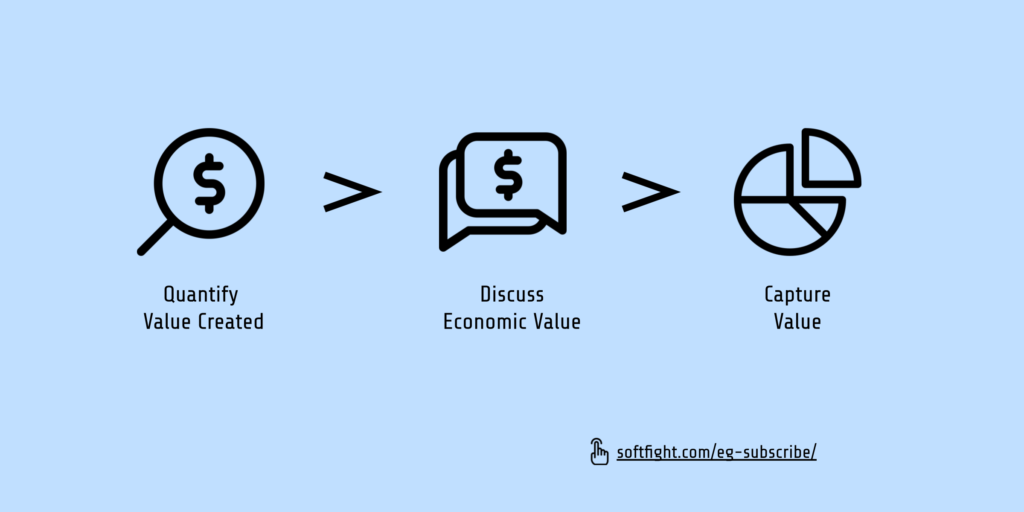Any business transaction is defined by two sides of the same coin: Value and Price.
Price is a number. Value is typically not.
That is a problem for you as a vendor, because it naturally pushes your prices lower than they have to be.

If you have decided that you need to quantify the value you create for your customer, here are 3 avenues you can explore.
Quantify risks > Cost of Inaction
Inaction or doing nothing is the silent deal breaker for many project proposals. Depending on what you are selling and your value proposition, inaction on the customer side may take many shapes and forms.
A programme manager from a medium sized company is not happy with the quality delivered by their product team. They look outside of their organisation, to hire a specialised, experienced team to develop a new module for their software platform. They send out Requests for Proposals, they evaluate providers, they negotiate pricing and contract terms. But in the end, nothing is signed, as the company management decides to continue with the current setup. Not making a change in an inefficient system is inaction.
If you find a way to quantify the risks from the customer’s perspective and make that value part of the conversation in the sales process, you have a higher chance of getting what you want.
Quantify costs > Total Cost of Ownership
Many vendors that charge relatively high rates are able to do it because they provide something of value, that saves some costs for their customers somewhere else in their organisational system.
An experienced development team that has a good process will save their customers a lot of costs by not needing expensive people in the customer’s team to oversee the project and keep everyone on track.
A skilled DevOps engineer might save the customer a lot of money that would be spent on a less inefficient cloud infrastructure setup.
Software that is properly architected and well-written will sometimes save the customers more than the cost of the entire project if they don’t have to deal with costly re-testing for each new release, bug fixing, refactoring or even entire re-writes.
The trouble with the Total Cost of Ownership is that many times customers are not looking at it. It’s your responsibility as a vendor to draw attention to it and quantify it.
Quantify rewards > Return on Investment
Even when a customer is contacting you with a specific request for a project and it seems that they already have a business case for it and it will happen, at the very least you will be able to charge a slightly higher rate if you quantify what they stand to gain from doing the project with you.
You will be shocked if you knew how many initiatives in the software industry are launched without anyone making any financial calculation about their feasibility.
Sometimes the rewards can be measured in higher revenues from launching a new mobile app or a new specific feature in a product.
More common for software projects is to measure the rewards for the customer in the costs saved by working with a team that is able to deliver a certain level of quality at a lower overall cost. You need to know what that cost differential is and use it in your price calculation and negotiation.
WHAT THIS MEANS FOR YOU
If you don’t quantify the value you create for your customer, no one else will for you.
Not the customer. And certainly not your competition.
If you don’t know how much value you are creating for your customer, how will you know if the value you are able to capture back through pricing is optimum?

